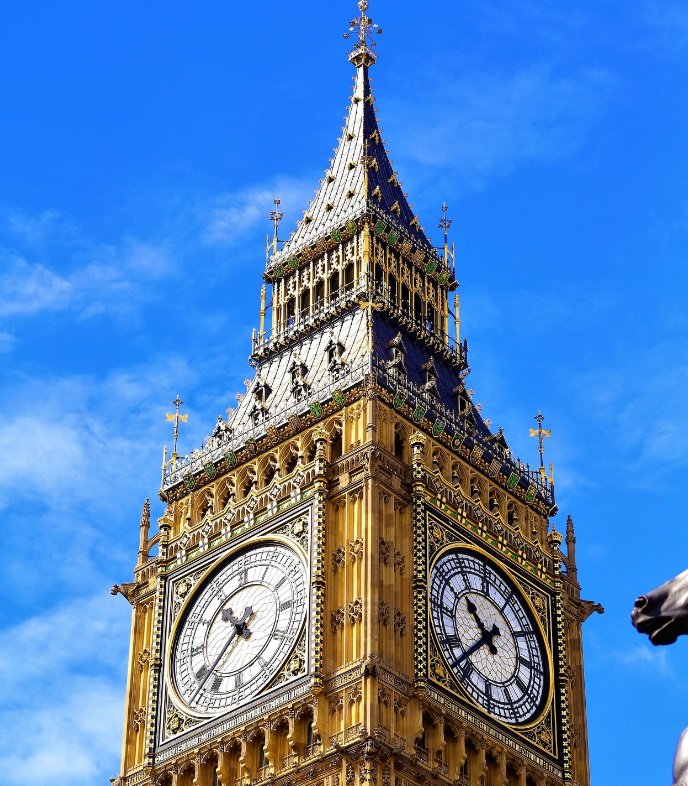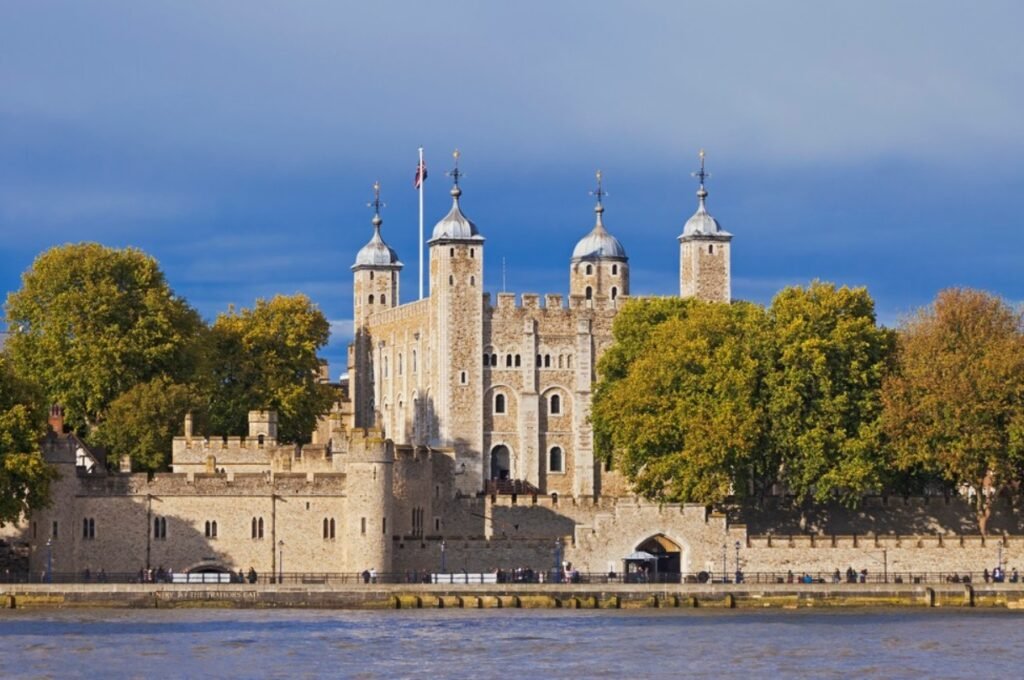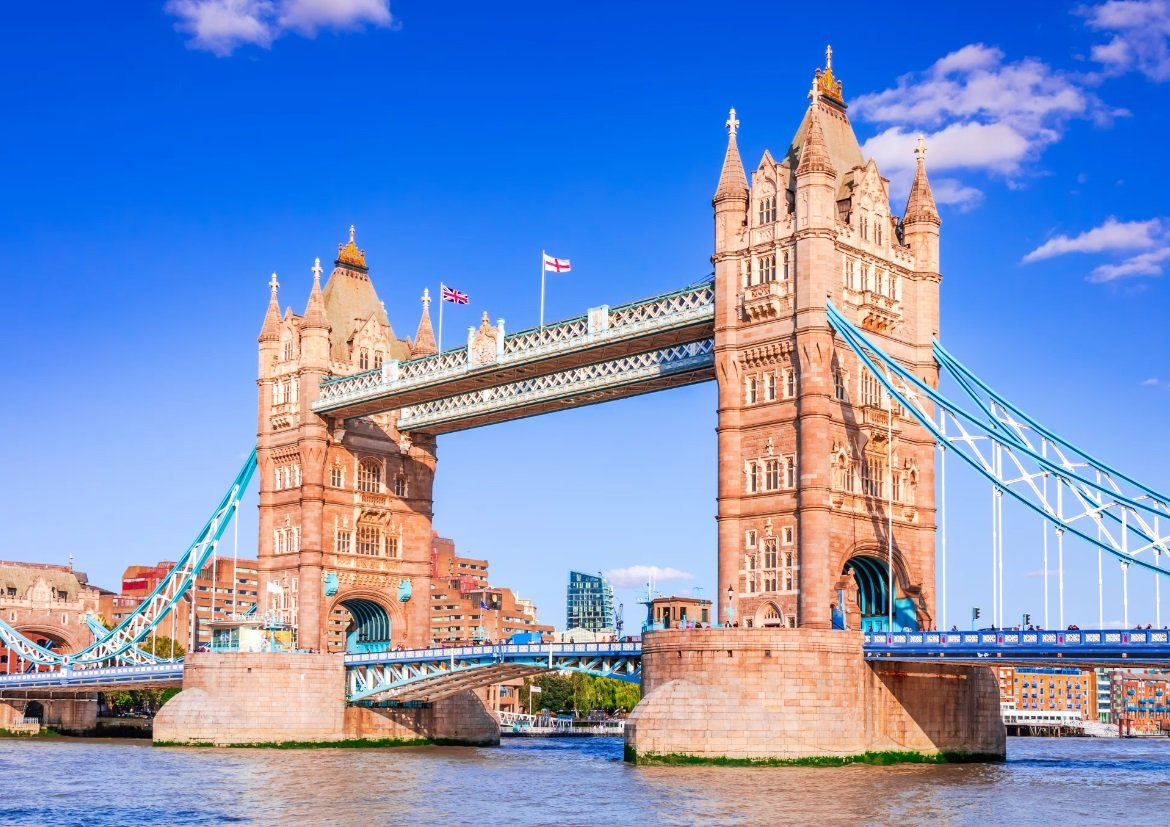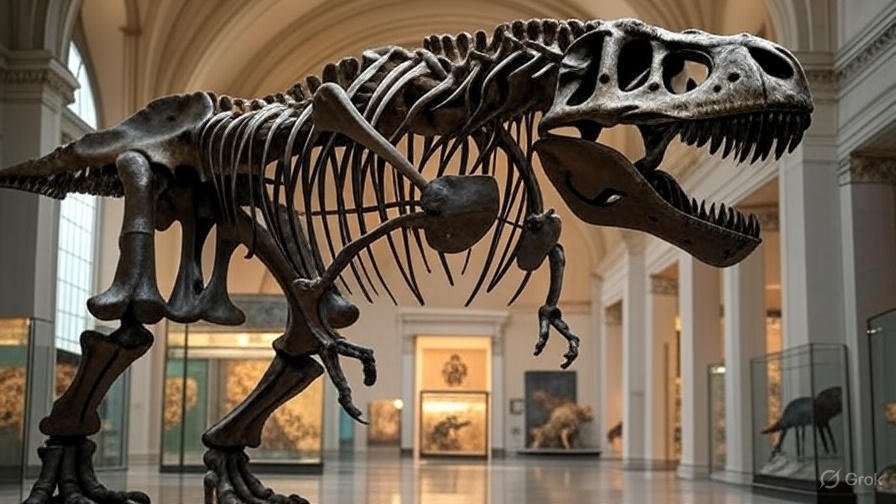London Tour: Top 5 excellent Places You Can’t Miss
London, a city that blends rich history with vibrant modernity, is a place where every street tells a story. From the towering structures of the past to the bustling hubs of culture, there’s always something to explore. Here’s a guide to some of London’s most iconic spots that should be on every traveler’s list.
Topics:
1. The London Eye: A Complete Guide to London’s Iconic Observation Wheel
The London Eye, also known as the Millennium Wheel, is one of the most iconic landmarks in the UK and a top tourist attraction in the heart of London. Located on the banks of the River Thames, it provides breathtaking views of the city, offering visitors a unique experience of London from above. Let’s dive into its fascinating history, visiting times, and ticketing options.

A Brief History of the London Eye
The London Eye was officially opened to the public on March 9, 2000, and it quickly became an iconic feature of London’s skyline. Created as a celebration of the new millennium, it was designed by architects David Marks and Julia Barfield, who wanted to create a symbol of optimism and technological progress.
Construction began in 1998, with each of the 32 passenger capsules being hoisted into place in stages. At the time of its construction, the London Eye held the title of the world’s tallest Ferris wheel, standing at an impressive 135 meters (443 feet). Although it has since been surpassed by other wheels, it remains the tallest in Europe and one of the most popular attractions worldwide, drawing over three million visitors annually.
Visiting the London Eye
A ride on the London Eye offers a 30-minute rotation that takes you high above the Thames, providing panoramic views of the city. On a clear day, you can see landmarks as far as 25 miles away! Some of the famous landmarks you can spot from the Eye include the Houses of Parliament, Big Ben, Buckingham Palace, St. Paul’s Cathedral, and the Shard.
Each capsule is fully enclosed and climate-controlled, ensuring a comfortable experience regardless of the weather. Every capsule has space for up to 25 people, and it moves slowly enough that people can safely walk around inside to enjoy views from all angles. For those interested in a more personalized experience, there are also private capsule options.
Best Times to Visit the London Eye
The London Eye is open year-round, with different opening times depending on the season and day. Generally, it opens from 11 AM to 6 PM, but in peak tourist seasons (like summer), it may stay open until 8 PM or later. To avoid crowds, it’s best to visit during early morning hours or later in the evening. Sunset rides are particularly popular, offering stunning golden-hour views and a chance to see the city lit up as dusk settles.
The busiest months for the London Eye are typically June through August, as well as major holiday seasons like Christmas and New Year’s. If you’re looking for a quieter experience, consider visiting in the off-season, such as in late autumn or early spring.
Ticket Options and Pricing
There are several types of tickets available for the London Eye:
- Standard Admission: This is the most basic ticket, offering access to one 30-minute rotation. Prices start from around £30 for adults and £25 for children (ages 3-15). Tickets can be purchased online or at the ticket office, though online booking is recommended to secure your preferred time slot.
- Fast Track Admission: For those who want to skip the queue, a Fast Track ticket allows you to access a dedicated entrance. This ticket costs slightly more than standard admission, around £45 for adults and £40 for children, but it’s a good choice during peak times when lines can be long.
- Private Capsule: For a more exclusive experience, you can book a private capsule, ideal for special occasions or large groups. Pricing varies, depending on the season and the number of guests.
- Combination Tickets: The London Eye offers various combo tickets, allowing you to enjoy other attractions like Madame Tussauds, Sea Life London Aquarium, and the London Dungeon along with your ride on the Eye. These packages provide good value for those who want to explore multiple attractions in London.
- Champagne Experience: A unique experience for couples or friends looking to celebrate, this option includes a glass of champagne during the ride and a Fast Track entry.
Discounted rates are available for families, students, and seniors. Children under 3 years of age can enter for free.
How to Reach the London Eye
The London Eye is easily accessible from different parts of the city. It is located on the South Bank, close to other major attractions like the SEA LIFE London Aquarium and the Southbank Centre.
- By Tube: The nearest underground station is Waterloo, which is just a 5-minute walk. You can also reach it from Embankment, Charing Cross, and Westminster stations, each of which is about a 10-15 minute walk.
- By Bus: Several bus routes stop near the London Eye, including routes 77, 211, and 381.
- By River: For a unique arrival, consider taking a riverboat along the Thames. The London Eye Pier is located right beside the attraction, providing a scenic approach.
Interesting Facts about the London Eye
- Engineering Feat: The London Eye was the tallest Ferris wheel in the world at its opening in 2000. Although it has been surpassed, it remains a remarkable feat of modern engineering.
- Symbolic Capsules: There are 32 capsules on the London Eye, each representing one of the 32 boroughs of London.
- Rotation Speed: It rotates at a gentle 0.6 miles per hour, slow enough for people to board and disembark without stopping.
- World Records: The Eye holds the Guinness World Record for “Largest Observation Wheel,” attracting millions of visitors annually.
Tips for Making the Most of Your Visit
- Book in Advance: To avoid long wait times and ensure you get your preferred time slot, book your tickets online ahead of your visit.
- Check the Weather: Clear days provide the best views, so if possible, plan your visit for a sunny day.
- Bring a Camera: The views are simply spectacular, and photos from the London Eye make for beautiful mementos.
- Consider a Night Ride: London’s landmarks are beautifully illuminated at night, providing a romantic and memorable experience.
The London Eye is a must-visit for anyone coming to London, whether it’s your first time or you’re a local who’s never experienced the views. It offers an unmatched perspective of the city and is an unforgettable part of London’s cultural and architectural landscape.
2. Tower Bridge: London’s Iconic Landmark
Tower Bridge, one of the most recognizable symbols of London, has captivated visitors and locals alike since it was first built in the late 19th century. With its grandiose twin towers and sweeping views of the River Thames, it’s not just a vital crossing but also an architectural masterpiece that beautifully blends history and innovation.

A Glimpse into the History of Tower Bridge
The story of Tower Bridge dates back to the 19th century, a time when London was expanding rapidly. With East London’s bustling port growing in size and activity, the need for another river crossing became apparent. However, adding a traditional bridge would have obstructed river traffic, so engineers needed a solution that could accommodate both vehicles and boats.
Construction of Tower Bridge began in 1886 and took eight years, involving 432 construction workers and about 11,000 tons of steel. Its design, created by architect Horace Jones and engineer John Wolfe Barry, was revolutionary, incorporating a bascule mechanism that allowed the bridge to open up for tall ships to pass through. In 1894, Tower Bridge was officially opened by the Prince of Wales (later King Edward VII).
Over the years, Tower Bridge has undergone several renovations and has remained a crucial part of London’s identity. In 1982, the bridge was opened to the public, and its walkways, once meant for pedestrians avoiding busy street-level traffic, were transformed into a museum showcasing the bridge’s history and engineering.
Visiting Tower Bridge Today
Today, Tower Bridge isn’t just a crossing—it’s an experience. Visitors can explore its history, marvel at its construction, and enjoy incredible views of London from the walkways.
What to Expect on a Visit
- The Engine Rooms: These rooms house the original Victorian steam engines that once powered the bridge’s lifting mechanism. Now beautifully preserved, they offer a fascinating look at the technology of the time.
- The Walkways: Suspended 42 meters above the Thames, the walkways provide panoramic views of London’s skyline, including sights like the Shard, Canary Wharf, and St. Paul’s Cathedral. The glass floors are a thrilling addition, letting you watch the traffic (and occasionally boats) pass beneath your feet.
- Tower Bridge Exhibition: The exhibition spans both towers and features interactive displays, rare photos, and films about the bridge’s history, the challenges of its construction, and its place in London’s story.
Practical Information for Visiting Tower Bridge
Opening Hours
- Summer Hours (April to September): 9:30 AM – 6:00 PM (last admission at 5:00 PM)
- Winter Hours (October to March): 9:30 AM – 5:00 PM (last admission at 4:00 PM)
It’s advisable to allow around an hour to fully explore the bridge and its exhibits.
Ticket Prices
Tickets can be bought on-site or online, with the latter often offering a small discount or skip-the-line options. Here’s a quick look at the standard ticket prices:
- Adults: £12.30
- Children (5–15): £6.20
- Seniors & Students: £9.25
- Family Ticket: £30.80 (2 adults + 2 children)
Children under five can visit for free, and discounts are available for groups and school visits.
Getting There
Tower Bridge is easily accessible by public transport. The nearest underground stations are:
- Tower Hill (Circle and District lines)
- London Bridge (Jubilee and Northern lines)
Buses, riverboats, and taxis are also convenient options for reaching Tower Bridge.
Best Time to Visit
While Tower Bridge is a delight at any time, visiting in the early morning or late afternoon allows you to avoid crowds and enjoy the views in a more peaceful setting. If you’re a photography enthusiast, consider visiting around sunset or after dark—the bridge’s lights reflecting on the Thames is truly a sight to behold.
Fun Facts About Tower Bridge
- Dual Purposes: Originally, the walkways were meant for pedestrians when the bridge was lifted. However, they were closed in 1910 due to low usage and reopened as part of the Tower Bridge Exhibition in 1982.
- A “Not So Royal” Mishap: In 1952, a bus had to jump between the two rising bascules when the bridge started opening unexpectedly while it was crossing. The driver, Albert Gunton, received a medal for his bravery.
- Color Transformation: Tower Bridge was originally painted a brownish-gray color. In 1977, it was repainted in red, white, and blue for Queen Elizabeth II’s Silver Jubilee and has kept its patriotic hues ever since.
Why Tower Bridge Is a Must-Visit
Tower Bridge offers more than just a photo opportunity. It’s a journey through the ingenuity of the Victorian era, a celebration of London’s maritime history, and an architectural marvel. Whether you’re walking on its glass floor, admiring the views, or discovering the stories behind its creation, a visit to Tower Bridge is bound to be memorable.
3. Big Ben: The Iconic Clock Tower of London
London is home to many famous landmarks, but few are as iconic or as instantly recognizable as Big Ben. Its towering presence, intricate design, and cultural significance make it a must-see for visitors. Whether you’re drawn by its architectural beauty or historical importance, Big Ben remains one of the world’s most beloved monuments. Here’s everything you need to know about Big Ben—from its rich history to the best ways to plan your visit.

A Brief History of Big Ben
Big Ben is the nickname for the Great Bell inside the Elizabeth Tower, located at the north end of the Palace of Westminster. The name “Big Ben” is often used to refer to the entire clock tower, but technically, it refers only to the bell. The tower itself was officially renamed the Elizabeth Tower in 2012 in honor of Queen Elizabeth II’s Diamond Jubilee.
The tower was completed in 1859 as part of Charles Barry’s design for the new Palace of Westminster after the original building was destroyed by fire in 1834. The Great Bell was cast in April 1858, and it chimed for the first time on July 11, 1859. Since then, Big Ben has witnessed numerous historical events, including both World Wars, during which it continued to keep time despite bomb damage to surrounding areas.
Big Ben is a symbol of endurance, resilience, and tradition in British culture. It’s not only a famous landmark but a beloved part of Britain’s history.
How Big Ben Got Its Name
There’s some mystery around how Big Ben got its name. Some historians believe it was named after Sir Benjamin Hall, the commissioner of works when the bell was installed. Others claim it was named after Ben Caunt, a famous heavyweight boxer of the time. Although the exact origins are unclear, the name “Big Ben” has stuck and become synonymous with British culture.
The Clock and Its Mechanics
Big Ben’s clock is an engineering marvel. It was designed by Edmund Beckett Denison and built by Frederick Dent. Known for its incredible accuracy, it was the largest clock in the world when it was completed. Each of the four clock faces measures 23 feet (7 meters) in diameter, and the minute hands are nearly 14 feet (4.3 meters) long!
The clock operates on a complex system of weights, gears, and pendulums, with adjustments made by adding or removing pennies on the pendulum to keep it accurate. Despite being over 150 years old, the clock’s mechanics have been carefully maintained and are still in remarkable working order today.
The Chimes of Big Ben
Perhaps one of the most famous aspects of Big Ben is its chimes. The bell rings every hour, and smaller bells chime every 15 minutes. The sound of Big Ben’s chime has become iconic, used by the BBC for their radio broadcasts and even during New Year’s Eve celebrations. The deep, resonant chime of Big Ben can be heard from miles away and has become one of London’s signature sounds.
How to Visit Big Ben
Currently, Big Ben is not open to foreign tourists, but UK residents can book tours through their Member of Parliament. However, tourists from around the world can still admire the tower from the outside. The best views are from Westminster Bridge or from across the Thames River near the London Eye.
Nearby Attractions
Big Ben is part of the larger Palace of Westminster, which also includes the Houses of Parliament. Many tourists combine their visit to Big Ben with a tour of the Parliament buildings, which provide fascinating insights into British government and history. Additionally, Westminster Abbey, Buckingham Palace, and the London Eye are all within walking distance.
Tickets and Tours
- For UK Residents: UK citizens can book a tour of Big Ben through their local MP. These tours are free of charge but require advance booking due to high demand.
- For International Visitors: While non-UK residents cannot tour the interior of Big Ben, many companies offer guided tours around the Westminster area, which include in-depth historical background on Big Ben and other nearby landmarks.
- Virtual Tours: For those who cannot visit in person, virtual tours of the Houses of Parliament, including an overview of Big Ben, are available online.
Best Times to Visit
If you want to avoid the crowds, consider visiting early in the morning or later in the evening. Big Ben is a popular attraction, so afternoons, especially on weekends, tend to be busier. London’s weather can be unpredictable, but clear days offer the best opportunity for viewing and photography.
Getting There
Big Ben is well-connected by public transport, making it easy to reach from most parts of London.
- By Tube: The Westminster station (Jubilee, District, and Circle lines) is just a short walk from Big Ben.
- By Bus: Several bus routes stop near Big Ben, including routes 148, 211, and 453.
- By Train: If you’re coming from outside London, Waterloo Station is a 15-minute walk from Big Ben.
Interesting Facts About Big Ben
- Big Ben was damaged during WWII but continued to operate, making it a symbol of British resilience.
- The clock tower leans slightly due to underground factors but is stable and safe.
- The bell weighs over 13 tons and is 7 feet (2.2 meters) in height.
- During repairs and renovations, Big Ben was silenced, though it rang for special occasions such as New Year’s Eve.
Visiting Big Ben is an experience steeped in history, architectural wonder, and cultural pride. From its fascinating backstory to the majestic chimes that ring out over the city, Big Ben captures the heart of London like no other landmark. Even if you can’t tour the interior, simply seeing Big Ben up close is a memorable experience. Whether you’re a history buff or just looking to take in one of London’s greatest sights, Big Ben is a must-visit.
4. Buckingham Palace: A Royal Legacy and London’s Crown Jewel
Buckingham Palace stands as one of the most iconic landmarks in London and one of the few remaining working royal palaces in the world. Situated in the heart of London, this magnificent building is not only the official residence of the British monarch but also a symbol of British heritage and history. With its grand architecture, historic significance, and famous Changing of the Guard ceremony, Buckingham Palace attracts millions of visitors from around the world every year. Here’s everything you need to know about this iconic royal palace before planning a visit.

History of Buckingham Palace
The origins of Buckingham Palace date back to the early 18th century, although it was not originally intended as a royal residence. It was built as Buckingham House in 1703 for the Duke of Buckingham. In 1761, King George III acquired the house as a private residence for Queen Charlotte, and it became known as “The Queen’s House.” Over the years, several renovations and expansions transformed the building into a grand palace.
In the early 19th century, King George IV hired architect John Nash to carry out extensive renovations, adding the east wing and creating the main frontage we recognize today. Queen Victoria was the first monarch to make Buckingham Palace her official residence in 1837, and since then, it has served as the main royal residence. The palace was further expanded with additional wings, gardens, and staterooms. Today, it has over 700 rooms, including 19 staterooms, 52 royal and guest bedrooms, and 78 bathrooms.
1. Architecture and Design
The architecture of Buckingham Palace reflects the neoclassical style of the era, featuring grand facades, Corinthian columns, and intricate detailing. The palace’s main structure is made of limestone, while the interior boasts opulent designs with gold accents, fine art, and exquisite furniture. The building has undergone various modifications over the centuries, blending traditional British architecture with modern amenities for the royal family.
The interior of Buckingham Palace is equally impressive, with rooms like the Throne Room, Ballroom, and Picture Gallery showcasing priceless artworks by artists such as Rembrandt, Rubens, and Vermeer. During the summer, the State Rooms are open to the public, allowing visitors to experience the grandeur of the royal interiors.
2. Visiting Buckingham Palace
Visitors can experience Buckingham Palace through guided tours and special exhibitions. However, access to the palace is limited to specific months and areas.
Opening Hours
The State Rooms of Buckingham Palace are open to the public only during the summer months, typically from late July to early October. The tours are available daily from 9:30 AM to 6:30 PM, with the last admission at 4:15 PM. For the most accurate and up-to-date visiting schedule, it’s recommended to check the official website of the Royal Collection Trust.
Tickets
Ticket prices for visiting the State Rooms at Buckingham Palace are as follows:
- Adults: £30.00
- Young Person (18-24): £19.50
- Children (5-17): £16.50
- Infants (under 5): Free
Discounts are usually available for seniors, families, and students. You can book tickets online in advance through the Royal Collection Trust’s website or purchase them on-site, although advance booking is recommended due to high demand during the summer season.
3. Changing of the Guard Ceremony
One of the most popular attractions at Buckingham Palace is the Changing of the Guard ceremony, where the Queen’s Guard soldiers dressed in traditional red tunics and bearskin hats switch duties in a formal parade. The ceremony takes place outside Buckingham Palace at 11:00 AM on Mondays, Wednesdays, Fridays, and Sundays. It’s a free event and lasts about 45 minutes. Arriving early to secure a good viewing spot is recommended, as the ceremony attracts large crowds.
4. Highlights of a Buckingham Palace Tour
A visit to Buckingham Palace is a journey through British royal history and culture. Some of the highlights include:
- The State Rooms: These are the palace’s most extravagant rooms, used for official ceremonies and hosting dignitaries. The Throne Room, in particular, is a favorite for visitors, with its grand design and historical significance.
- The Picture Gallery: Featuring works from the royal art collection, the Picture Gallery showcases paintings by world-renowned artists like Rembrandt and Rubens.
- The Royal Mews: Located nearby, the Royal Mews houses the royal carriages and horses. Visitors can see the Gold State Coach, which is often used for royal ceremonies.
- The Garden: Spanning 39 acres, the Buckingham Palace Garden is a tranquil retreat featuring a lake, a rose garden, and over 350 types of wildflowers. In summer, visitors on the State Rooms tour can stroll through part of the garden.
5. How to Get There
Buckingham Palace is located in the Westminster area of central London and is easily accessible by public transportation:
- By Underground: The nearest Tube stations are Victoria, Green Park, and Hyde Park Corner. Green Park is the closest, with a short walk through Green Park leading directly to the palace.
- By Bus: Several bus routes stop near Buckingham Palace, including numbers 11, 211, C1, and C10.
- On Foot: Buckingham Palace is a pleasant walk from major landmarks like Big Ben, the Houses of Parliament, and Westminster Abbey, making it convenient to visit as part of a sightseeing tour in London.
6. Best Time to Visit
The best time to visit Buckingham Palace is during the summer when the State Rooms are open to the public. Early morning or late afternoon visits are less crowded, offering a more peaceful experience. If you’re interested in the Changing of the Guard, plan to arrive around 10:00 AM to get a good viewing spot.
7. Tips for Visitors
- Book Tickets in Advance: Buckingham Palace is a popular attraction, so book your tickets in advance, especially during the summer season.
- Photography Restrictions: Photography is not allowed inside the State Rooms, so be prepared to keep your camera in your bag until you’re outside.
- Accessibility: The palace has made efforts to improve accessibility for visitors with mobility issues, including step-free access and guided tours designed for visually impaired guests.
Buckingham Palace is not just a palace but a treasure trove of British history, art, and culture. With its stunning architecture, world-class art collection, and royal significance, it’s no wonder Buckingham Palace remains a must-visit destination in London. Whether you’re a history buff, art lover, or simply curious about British royalty, Buckingham Palace offers an unforgettable experience that will give you a taste of British heritage and the grandeur of the monarchy.
5. Exploring the Tower of London: A Glimpse into Britain’s Medieval Majesty
The Tower of London is a remarkable fortress on the banks of the River Thames, steeped in nearly a thousand years of history. Once a royal palace, a prison, and even a zoo, this iconic landmark is now one of London’s most visited attractions. For centuries, it has fascinated visitors with its rich heritage, dark tales, and glittering Crown Jewels. If you’re planning a visit or simply want to learn more about this historic site, here’s a guide to everything you need to know about the Tower of London.

A Brief History of the Tower of London
The story of the Tower of London began in 1078 when William the Conqueror ordered its construction as a demonstration of Norman power and to defend London from potential threats. The White Tower, the central structure, was completed in 1100 and remains the heart of the complex.
Over the centuries, the Tower expanded, with walls, towers, and buildings added to form a larger, fortified complex. It became an infamous prison where high-profile prisoners like Anne Boleyn, Lady Jane Grey, and even Elizabeth I were held. Notorious for its executions, many prisoners met their tragic end on Tower Green, leaving tales of mystery and ghostly apparitions that attract thrill-seekers and history buffs alike.
Apart from its grim history, the Tower was a royal residence and a stronghold for the Crown Jewels, a tradition that remains today. In the medieval period, it even housed a menagerie, which included exotic animals like lions and polar bears, gifted to the monarchs.
The Tower Today: What to See
Today, the Tower of London offers a mix of history, legend, and splendor. Here are some highlights:
- The Crown Jewels: The Tower is home to Britain’s Crown Jewels, a stunning collection of regalia used in royal ceremonies. The display includes the dazzling Imperial State Crown, worn by British monarchs since the 17th century, and the Sovereign’s Sceptre, featuring the Cullinan Diamond, one of the largest diamonds in the world.
- Yeoman Warders (Beefeaters): These guards, famously known as Beefeaters, have been the ceremonial protectors of the Tower and the Crown Jewels for centuries. They offer guided tours, sharing fascinating tales of the Tower’s past and adding a lively touch to the experience.
- The White Tower: This iconic building is the oldest part of the Tower complex and houses the Royal Armouries collection, including medieval weaponry and armor. You can also see the medieval chapel of St. John, which provides a glimpse into Norman architecture.
- Ravens of the Tower: Legend says that if the ravens ever leave the Tower, the kingdom will fall. The Tower currently houses several ravens that are looked after by the Ravenmaster, ensuring these mythical birds stay comfortably within the fortress walls.
- Medieval Palace: Parts of the Tower have been restored to show what life would have been like for royalty in medieval England. You’ll find recreations of Edward I’s rooms, complete with tapestries, ornate decorations, and historic artifacts.
- Bloody Tower and Torture Chamber: For those interested in the darker side of history, the Bloody Tower tells stories of intrigue, imprisonment, and torture. It is believed to be where the two young princes (Edward V and his brother) were murdered, adding a layer of mystery that captivates visitors.
Visiting Information
Opening Hours
The Tower of London operates year-round, but opening hours vary by season.
- Summer (March to October): Open daily from 9:00 am to 5:30 pm, with the last admission at 5:00 pm.
- Winter (November to February): Open daily from 9:00 am to 4:30 pm, with the last admission at 4:00 pm.
- Closures: The Tower may close for public holidays like Christmas and New Year’s. It’s always best to check the official website before planning your visit.
Ticket Information
Tickets can be purchased online in advance or at the Tower itself. Here’s a breakdown of ticket prices:
- Adults: £29.90
- Children (5-15 years): £14.90
- Concessions (students, seniors): £24.00
- Family Tickets: £82.10 (includes 2 adults and up to 3 children)
It’s advisable to book tickets online as it can save you both money and time. Visitors who book online often receive discounts and avoid long queues.
Guided Tours and Audio Guides
If you want to get the most out of your visit, consider joining a Yeoman Warder (Beefeater) tour. These knowledgeable guides will give you insight into the Tower’s history, sharing intriguing stories and answering questions along the way. Alternatively, you can rent an audio guide for a self-paced experience.
Getting There
The Tower of London is centrally located and easily accessible by public transport. The closest Underground station is Tower Hill on the District and Circle Lines. Several buses also serve the area, as do riverboat services from various London piers along the Thames.
Tips for Visitors
- Arrive Early: The Tower is a popular attraction, especially during summer. Arriving early can help you avoid crowds and see popular exhibits like the Crown Jewels with shorter wait times.
- Wear Comfortable Shoes: The Tower complex covers a large area with plenty of stairs and cobblestone pathways, so comfortable shoes are essential.
- Check for Special Events: The Tower hosts various events and themed exhibitions throughout the year, adding an extra layer of interest to your visit. Check the official website for current events.
- Explore the Surrounding Area: After your Tower visit, take a stroll along the River Thames or visit Tower Bridge nearby for more incredible views and historical landmarks.
A visit to the Tower of London is a journey through history, filled with tales of royalty, treachery, and courage. With its stunning architecture and iconic exhibits, it’s no surprise that the Tower remains a must-see for anyone visiting London. Whether you’re drawn to its darker legends or simply want to marvel at the Crown Jewels, the Tower of London offers something for everyone, making it one of the city’s most unforgettable attractions.
I hope this article gives you a well-rounded guide to the Tower of London, whether you’re planning a visit or just curious about its history.
Unlock the Beauty of China: 05 Breathtaking Destinations for Every Traveler
The Statue of Unity: A Modern Marvel Reflecting India’s Spirit of Unity
The Statue of Liberty: A Historic Icon of Freedom, Hope, and Friendship since 1886
Giza Necropolis: The Timeless Wonders of the Ancient World and Guide to Touring and Tickets














3 comments